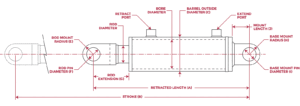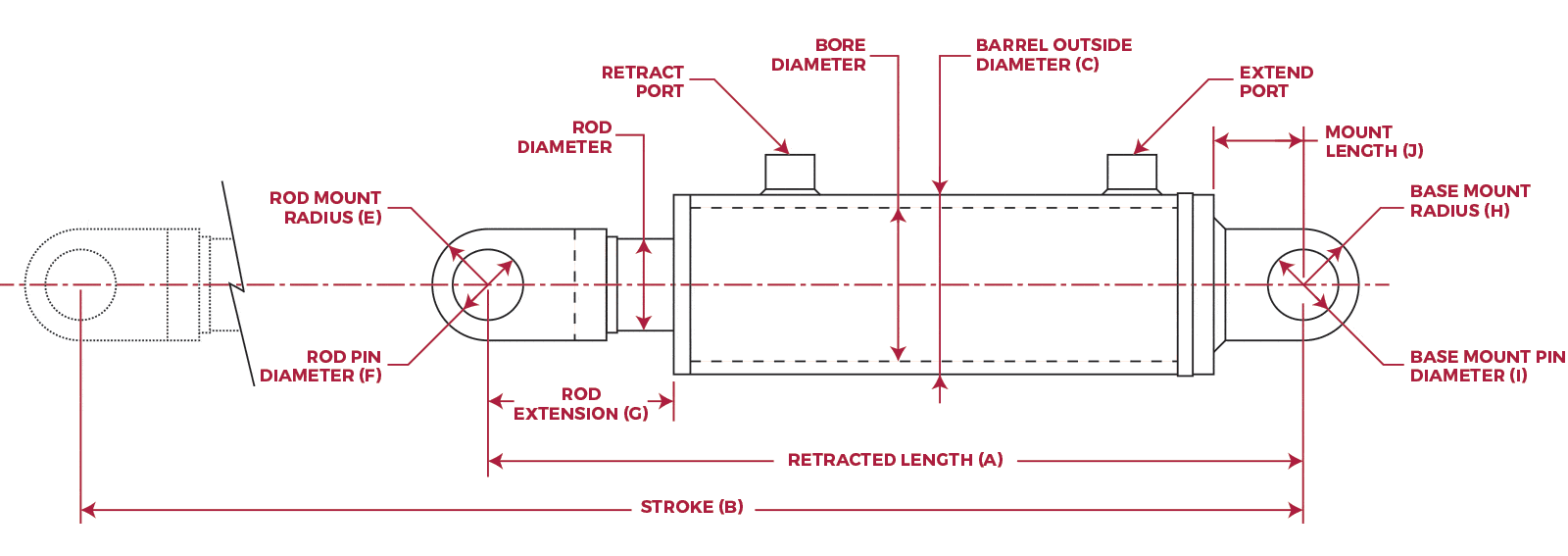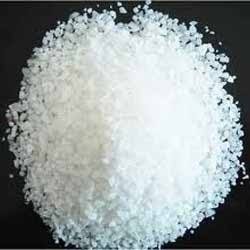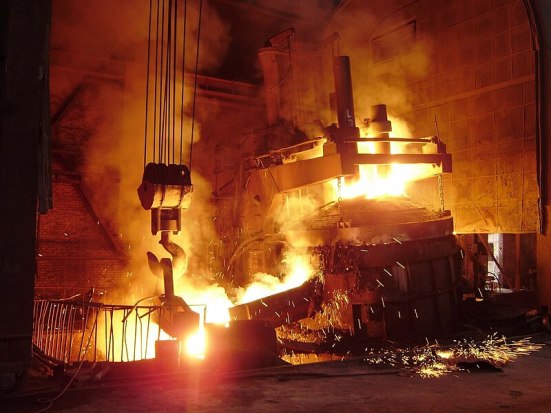
Hydraulic cylinders are mechanical devices that use fluid power to generate linear motion. They are widely used in various industrial applications, such as construction, manufacturing, and agriculture, to provide force and movement.
The process of a hydraulic cylinder typically involves the following steps:
- Fluid intake: Hydraulic cylinders are connected to a hydraulic power unit or system, where hydraulic fluid (usually oil) is stored. The fluid is then directed into the cylinder through a hydraulic hose or pipe.
- Cylinder assembly: The cylinder assembly consists of a cylindrical barrel, a piston, and a piston rod. The piston is positioned inside the barrel, and the piston rod extends from one end of the cylinder. The space inside the cylinder, between the piston and the end cap, is known as the cylinder chamber.
- Fluid pressure: Once the hydraulic fluid enters the cylinder chamber, it exerts pressure on the piston. This pressure creates a force that can move or hold a load.
- Linear motion: When the fluid pressure is higher on one side of the piston than the other, it causes the piston to move. The movement of the piston is transmitted to the piston rod, creating linear motion.
- Control valves: The flow of hydraulic fluid into and out of the cylinder chamber is controlled by various types of hydraulic valves. These valves can regulate the speed, direction, and force of the hydraulic cylinder.
To control a hydraulic cylinder, you can use different control methods, such as manual control, electrical control, or proportional control. The specific control method depends on the application and the level of precision required.
Some common control mechanisms for hydraulic cylinders include:
- Manual control: This involves manually operating a control lever or handwheel to control the flow of hydraulic fluid, and thus the movement of the cylinder. Manual control is often used in simple applications or for positioning tasks that don’t require automated control.
- Electrical control: In this method, an electrical signal is used to control the opening and closing of hydraulic valves, which in turn control the flow of hydraulic fluid. Electrical control can be done through switches, relays, or programmable logic controllers (PLCs), allowing for automation and remote control.
- Proportional control: Proportional control utilizes electrical signals to control the position, speed, and force of a hydraulic cylinder with a high degree of accuracy. Proportional solenoid valves are commonly used for precise and dynamic control applications.
Overall, hydraulic cylinders can be effectively controlled using various methods depending on the specific requirements of the application.




